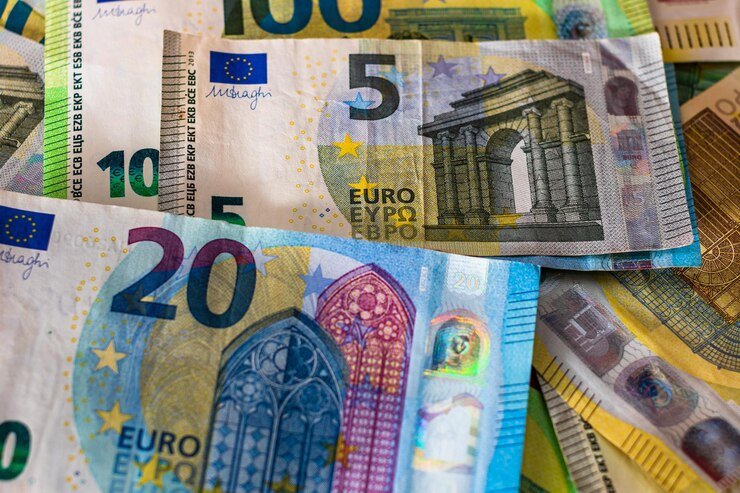Ethereum Price Forecast: Will ETH Plunge to $1,200 Amid Trade War Tensions?
Ethereum’s price is facing downward pressure as global trade war tensions rise following former U.S. President Donald Trump’s announcement of reciprocal tariffs on multiple countries. The cryptocurrency declined by 4%, mirroring losses in the stock market, with the S&P 500 also dropping significantly. Analysts are warning that if Ethereum breaks below the $2,150 support level and a descending channel’s lower boundary, it could drop to $1,200. However, bearish momentum, as indicated by RSI and Stochastic Oscillator readings, is not translating into net inflows for Ethereum ETFs, which have been better than Bitcoin ETFs, at least. The coming week will be critical as market sentiment is expected to shift with Trump’s trade policies, which are going to impact both traditional and digital assets. KEY LOOKOUTS • A breakdown below this key support level may lead to a sharp fall toward the $1,200 price zone. • The market is waiting for Trump’s next move on reciprocal tariffs, which may further increase selling pressure on ETH and other risk-sensitive assets. • Ethereum’s price is increasingly mirroring the S&P 500, meaning further stock market losses could accelerate ETH’s decline in the coming days. • Despite the bearish trends, Ethereum ETFs have performed better than Bitcoin ETFs, which may indicate investor confidence that can stabilize prices. Ethereum’s price trend is still uncertain as it is hovering near key support levels amidst rising global trade tensions. Former U.S. President Donald Trump’s announcement of reciprocal tariffs has triggered a market-wide sell-off, with Ethereum falling 4% and the S&P 500 plummeting. Failure to hold at the crucial support level of $2,150 could send ETH to a subsidence towards $1,200. But ETF inflows have been increasing lately; this does gain some institutional confidence and signals stabilization in prices. With these correlations moving up between Ethereum and traditional markets, economic developents and decisions of Trump will be the next points in the deciding direction for Ethereum. Ethereum is under downward pressure as Trump’s tariff plans rattle markets, and ETH has fallen 4% with the stocks. If it breaks the support level of $2,150, then a fall to $1,200 is likely. Meanwhile, strong ETF inflows indicate institutional confidence, which may stabilize the price. • ETH fell sharply after Trump announced reciprocal tariffs, similar to the stock market losses. • If ETH breaks below this critical level, it may lead to a further fall to $1,200. • Price action of Ethereum tracks the S&P 500 quite closely as its linkages to traditional markets intensify • Market mood remains bearish on account of heightened trade tension and potential jolts in the economy. • Despite sharp declines, net inflows of more than $420 million are witnessed in the case of Ethereum ETFs and surpassed Bitcoin. • RSI and Stochastic Oscillator signals a continuation of bearish sentiment. The latter further increases the prospects of going south. • The ETH can bounce back and make its way toward higher values if it sustains above the support and breaks through the resistance line at $2,817. Ethereum’s price continues to come under strong bearish pressure due to former U.S. President Donald Trump’s recent announcement of imposing reciprocal tariffs on several countries. This sent ripples in global markets. It has shed 4%, following the traditional market losses. For instance, S&P 500 plummeted highly. This would mean that if Ethereum fails to hold the strong support level at $2,150, then the decline may easily reach the next target of $1,200. Technical indicators like RSI and Stochastic Oscillator confirm bearish momentum; hence, ETH may fail to regain upward momentum unless market sentiment somehow improves. Ethereum Daily Price Chart TradingView Prepared by ELLYANA Despite the negative price action, Ethereum ETFs have outperformed Bitcoin ETFs, recording over $420 million in net inflows compared to Bitcoin’s $32.5 million. Institutional investors still see value in Ethereum despite short-term volatility. However, ETH remains highly correlated with the stock market, meaning further declines in equities could accelerate its downward trend. Key levels on the charts which traders must keep an eye open for are at support and resistance, with the bounce from this $2,150 zone and a break over $2,817 making for the big, next, substantial price movements by Ethereum. TECHNICAL ANALYSIS Ethereum’s technical is bearish since the current fall is at testing the lower edge of the downward channel. Thus, failure in holding that very important support in the vicinity of $2,150 can allow a steeper fall into $1,200. The RSI and Stochastic Oscillator are well below their respective neutral levels, which means a strong bearish momentum is intact. Furthermore, in the past 24 hours, Ethereum had liquidations in futures worth $65.43 million, an indicator of high market uncertainty. If ETH is able to rebound off the support and break the $2,817 resistance level, it can move towards the reversal, likely hitting $4,500 long-term. FORECAST Ethereum has a pretty good chance for a strong pullback if this holds the significant support levels. If ETH was able to jump off the supporting zone at around $2,150 and pass the resistance marked at $2,817 then it could prove to be quite a reversal move. A bounce above the line of the downward channel could see a further upside towards the psychological level of $4,500. Institutional interest remains strong, as evidenced by the recent $420 million net inflows into Ethereum ETFs, suggesting that long-term investors see value in ETH despite short-term volatility. Additionally, if broader market sentiment improves and risk assets recover, Ethereum could benefit from a renewed bullish phase. Ethereum faces significant risks if it fails to hold the crucial $2,150 support level. A break below this level might extend the sell-off, pushing ETH down toward $1,200. The increasing correlation of Ethereum with the S&P 500 indicates that further declines in traditional markets will drag their prices lower and keep crypto prices lower as well. Bearish technical signs for the RSI and Stochastic Oscillator mainly indicate selling pressure over here. Moreover, if Trump’s trade policies continue to intensify global economic tensions, risk assets such as Ethereum may





